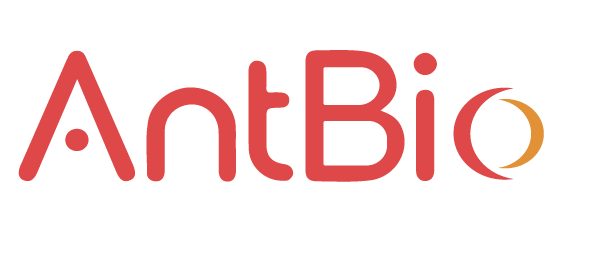Lactylation Modification: A Novel Target in Tumor Research—Deciphering Key Mechanisms and Therapeutic Potential through Findings from Top-Tier Journals

Lactylation Modification: A Novel Target in Tumor Research—Deciphering Key Mechanisms and Therapeutic Potential through Findings from Top-Tier Journals
In the field of tumor research, a substance once dismissed as "metabolic waste"—lactic acid—is stepping onto the scientific stage in a new role. With breakthroughs in proteomics technology, lactate-derived lysine lactylation (Kla) modification has emerged as a crucial link connecting metabolic reprogramming and tumor development. Recently, prestigious journals such as Nature, Nature Metabolism, and PNAS have published significant studies revealing the central role of lactylation modification in tumor chemotherapy resistance, metabolic regulation, and the development of therapeutic targets, opening new avenues for precision cancer therapy.
I. New Mechanism of Chemotherapy Resistance: NBS1 Lactylation Repairs DNA Double-Strand Breaks
A study by Sun Yat-sen University in Nature uncovered for the first time that lactylation at the K388 site of the DNA repair protein NBS1 is the "hidden driver" of tumor resistance. By analyzing specimens from gastric cancer patients resistant to platinum-based chemotherapy, researchers found significantly elevated lactic acid levels in resistant tumors, accompanied by increased NBS1 lactylation modification. Mechanistic studies revealed that this modification promotes the formation of the MRE11-RAD50-NBS1 complex, accelerating DNA double-strand break repair and leading to chemotherapy drug failure. Clinical validation indicated poorer prognosis in patients with high NBS1 K388 lactylation levels, while stiripentol, a drug that inhibits lactic acid production, effectively reduced this modification and restored tumor sensitivity to chemotherapy. This discovery directly links lactylation modification to the DNA repair pathway, offering a new strategy to overcome chemotherapy resistance.

II. Metabolic Regulation Code in Liver Cancer: AK2 Lactylation Drives Proliferation and Metastasis
Research by Fudan University published in Nature Metabolism mapped the global lactylation modification landscape of hepatitis B-related liver cancer, identifying 9,275 modification sites, with non-histone modifications accounting for up to 99.8%. Focusing on the K28 site of adenylate kinase AK2, the study found that lactylation modification inhibits enzyme activity, activating glycolytic and nucleotide metabolic pathways and promoting liver cancer cell proliferation and metastasis. In vitro experiments showed that exogenous lactic acid significantly elevated AK2 K28 lactylation levels, while blocking this modification inhibited tumor growth. This is the first confirmation of the direct regulatory role of lactylation modification on metabolic enzymes in liver cancer, providing a potential target for targeting metabolism-dependent liver cancer.
III. New Therapeutic Target in Colorectal Cancer: KAT8-Catalyzed Lactylation Promotes Protein Synthesis
Research by the Chinese Academy of Medical Sciences and Beijing Institute of Technology in PNAS revealed a new function of lysine acetyltransferase KAT8 as a "lactic acid transferase." By analyzing colorectal cancer tissues, it was found that KAT8 can catalyze lactylation at the K408 site of the eEF1A2 protein, enhancing its GTPase activity and accelerating protein synthesis, thereby driving tumor cell proliferation. Notably, KAT8's catalytic activity depends on the lactic acid microenvironment, and knocking out KAT8 significantly inhibits tumor growth under high lactic acid conditions, with clinical data showing a strong correlation between high KAT8 expression and poor patient prognosis. This study identified for the first time a key transferase for lactylation modification, providing new ideas for developing microenvironment-responsive anticancer drugs.
Research Implications: From Mechanistic Analysis to Clinical Translation
These three studies collectively reveal three core functions of lactylation modification: regulating DNA repair-mediated resistance, remodeling metabolic pathways to promote proliferation, and driving protein synthesis to accelerate carcinogenesis. Notably, lactylation modification is highly synergistic with the acidic features of the tumor microenvironment, forming a "metabolism-modification-function" positive feedback loop. Targeting this characteristic, a dual strategy of inhibiting lactic acid production (e.g., LDHA inhibitors) and targeting specific lactylation sites (e.g., NBS1, AK2, KAT8) may be the key to overcoming current therapeutic bottlenecks.

Technological Support: Lactylation Omics Research Accelerates
With the breakthrough of Novogene's "Oscar DIA Lactylation Omics" technology, over 19,000 lactylation sites can be identified in a single detection, providing an efficient tool for large-scale screening of differential modifications. Its jointly launched "Lactylation Omics Million Support Plan" further aids domestic researchers with million-level resources to explore new targets and drive the translation of basic research into clinical applications. From "metabolic waste" to "signal molecule," the discovery of lactylation modification not only rewrites the understanding of tumor metabolic regulation but also opens a new paradigm for "metabolism-modification-target" integrated research. With the elucidation of more modifying enzymes and key sites, targeted lactylation pathway precision therapy holds promise for the future, potentially bringing revolutionary breakthroughs in overcoming tumor resistance, metastasis, and other challenges.
Product Information
| Catalog Number | Product Name | Species | Conjugation | Price |
| UA080440 | KAT8 Protein, Human | Human | Unconjugated | $536 |
| S0B1067 | Phospho-PAK2 (Ser20) Recombinant Rabbit mAb (S-507-231) | Rabbit | Unconjugated | Inquiry |
| UA080399 | Biotinylated JAK2 Protein, Human | Human | Biotin | $592 |
| UA080257 | JAK2(JH1 JH2) Protein | Human | Unconjugated | $767 |
| S0B0855 | Jak2 Recombinant Rabbit mAb (S-1316-5) | Rabbit | Unconjugated | Inquiry |




